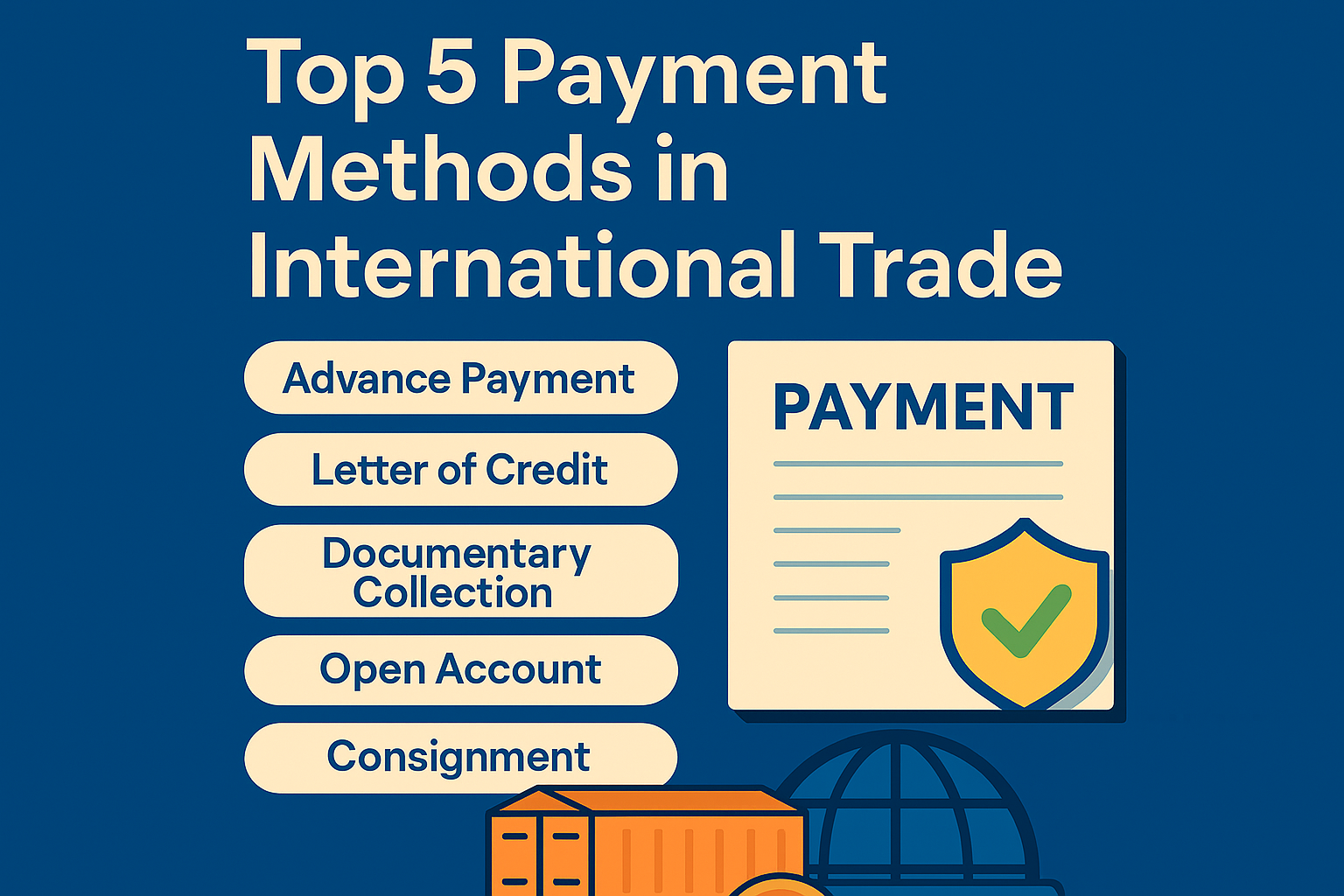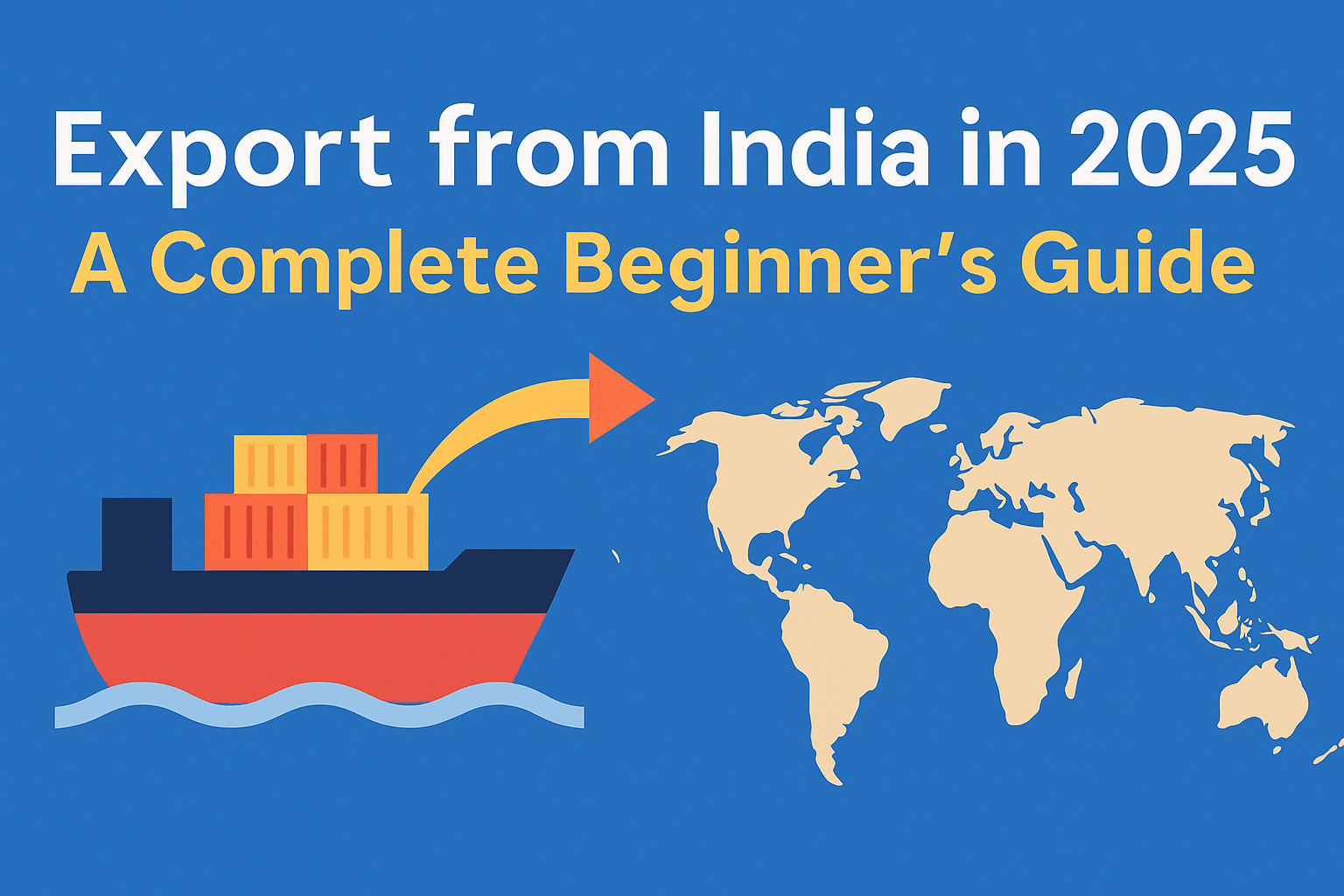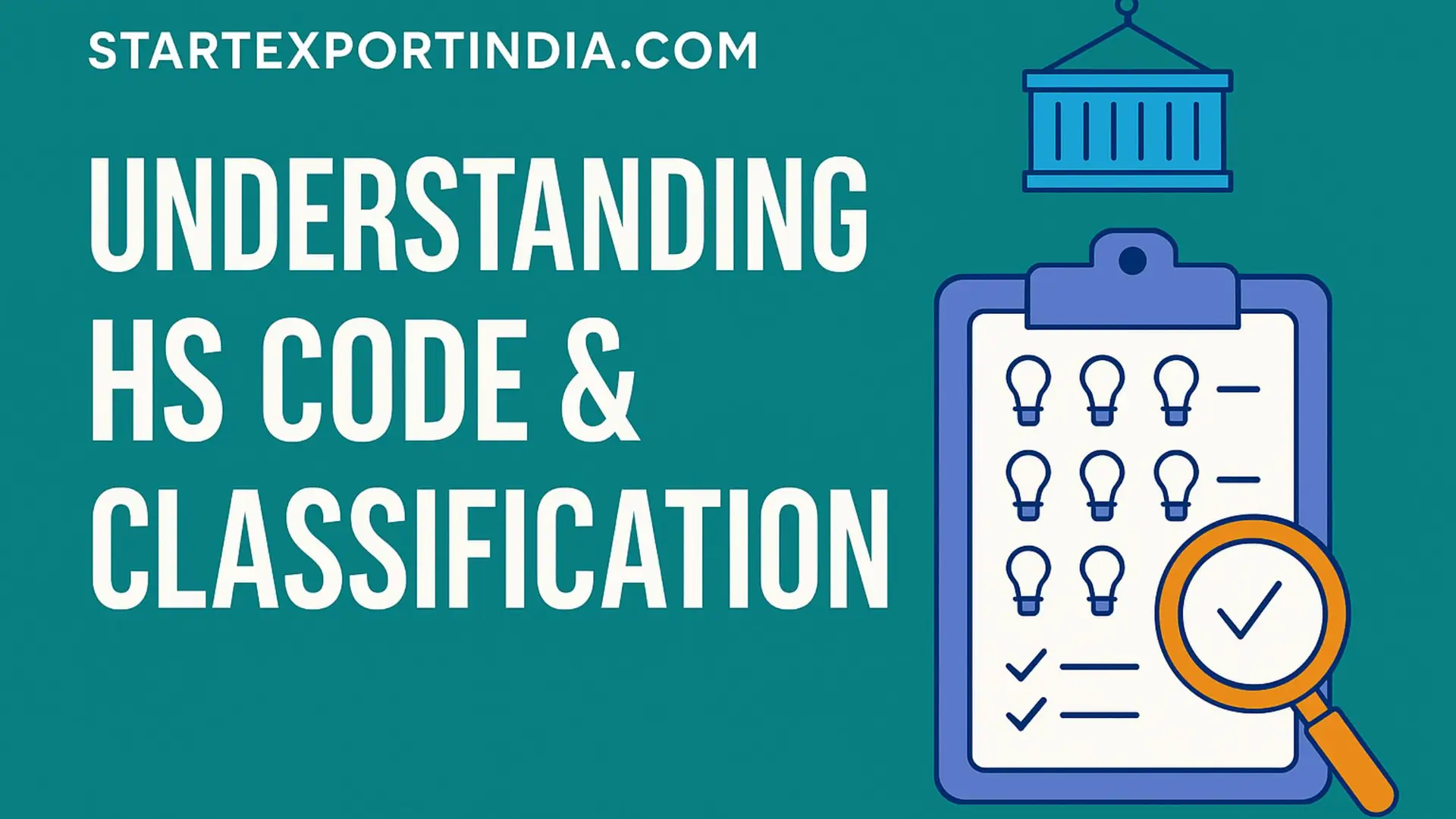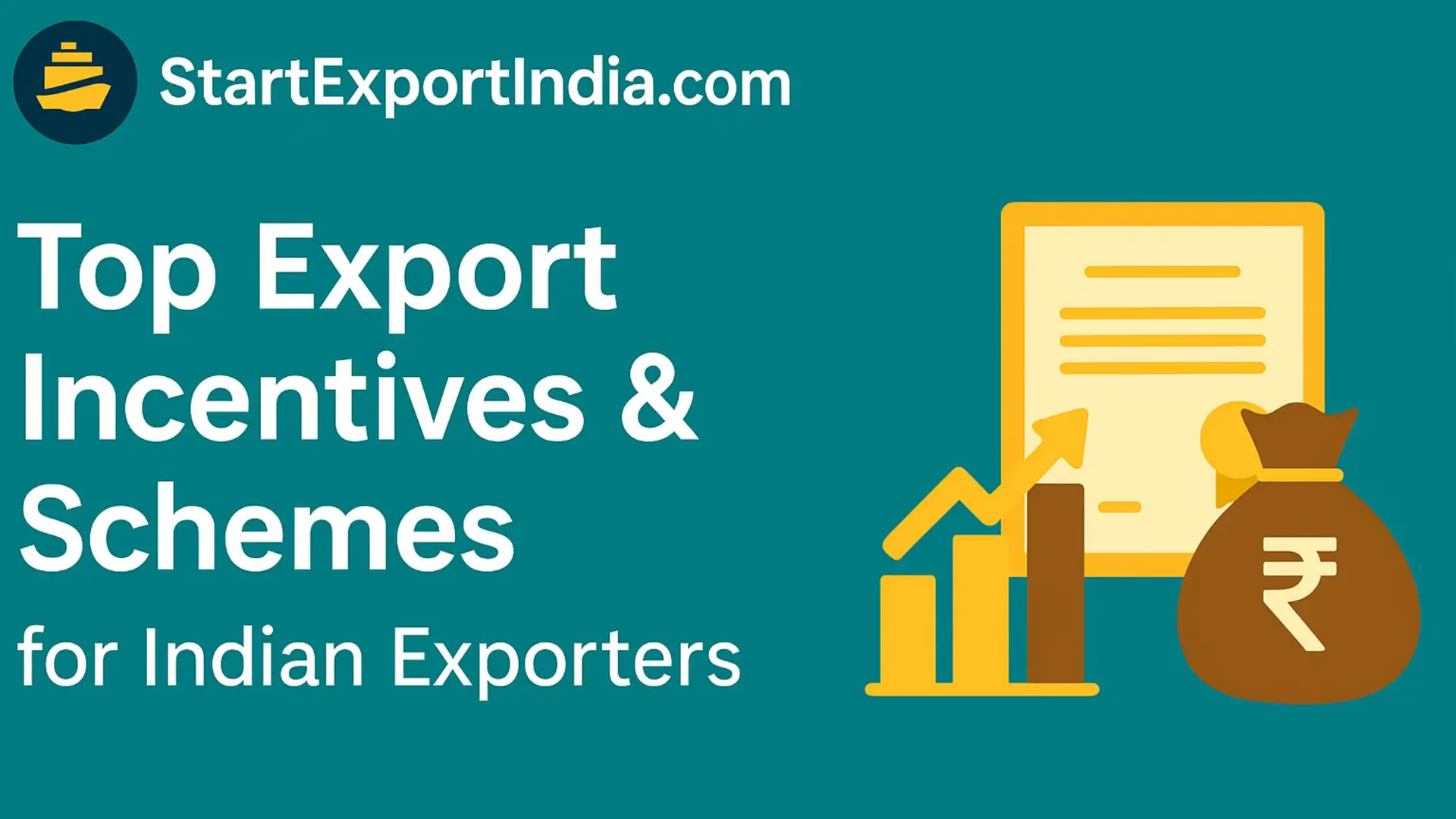A Complete Guide for Indian Exporters in 2025
In international trade, receiving your payment safely is as important as shipping your goods. Every transaction involves risk — and choosing the right payment method can make or break your export business.
Whether you’re a new exporter or expanding globally, understanding the top payment methods used in international trade — along with their advantages and risks — is critical.
📦 Why Payment Terms Matter
When exporting from India, your payment terms:
- Affect your cash flow
- Determine your level of risk
- Influence buyer trust and competitiveness
- Are often required for customs clearance and bank documentation
Let’s explore the top 5 most commonly used payment methods in global trade.
🔹 1. Advance Payment (100% in Advance)
How it Works:
The buyer pays the full amount before the goods are shipped.
Pros (for Exporter):
- 💯 Zero risk of non-payment
- 💰 Strong working capital
- ✅ Simple process and fast cash flow
Risks (for Buyer):
- 🛑 No guarantee goods will be shipped
- ❌ No legal recourse if fraud occurs
Best for:
- Small shipments
- New exporters with trustworthy clients
- Custom or made-to-order products
🔹 2. Letter of Credit (LC)
How it Works:
A bank-to-bank guarantee. The buyer’s bank guarantees payment to the exporter upon fulfilling all LC terms (such as document submission, shipment proof).
Pros:
- 🛡️ Secure for both buyer and seller
- 🔒 Protects against default
- ✅ Accepted worldwide
Risks:
- 🧾 Complex paperwork
- 🕐 Strict timelines; late or incorrect documents = no payment
- 💸 Bank charges can be high
Best for:
- Large orders
- First-time trade between unknown parties
- High-value contracts
🔹 3. Document Against Payment (DP at Sight)
How it Works:
The exporter ships goods and sends the documents to the buyer’s bank. The buyer gets documents (and can clear the cargo) only after payment.
Pros:
- ⚖️ Somewhat secure; bank holds control of goods
- ✅ No need for LC
- 💼 Common in many trade transactions
Risks:
- ❌ Buyer may refuse to pay and reject documents
- 🛑 You bear cost of return or local sale
Best for:
- Medium-risk buyers
- Moderate-value goods
- Trusted markets with repeat clients
🔹 4. Document Against Acceptance (DA / Usance)
How it Works:
Goods are shipped, and documents are released to the buyer against acceptance of a bill of exchange, promising future payment (30, 60, 90 days).
Pros:
- 🤝 Flexible and buyer-friendly
- 🧾 Helps close deals with credit terms
- 💳 Encourages long-term business
Risks:
- ⚠️ Payment is delayed
- ❌ No guarantee — buyer might default
- 🏦 Legal action needed for non-payment
Best for:
- Established, trusted buyers
- Long-term B2B relationships
- Competitive export markets
🔹 5. Open Account (O/A)
How it Works:
Goods are shipped without any payment guarantee. The buyer pays later, usually 30-90 days after receiving the goods.
Pros:
- 🌍 Buyer friendly
- 📈 Boosts competitiveness
- 📦 Speeds up shipments
Risks:
- 🚨 Extremely high risk of non-payment
- ❌ No control once goods are shipped
- 🧾 Legal recovery is difficult across borders
Best for:
- Very strong buyer relationships
- Low-value shipments
- Domestic group subsidiaries or MNCs
📊 Summary Comparison Table
| Payment Method | Exporter Risk | Buyer Risk | Payment Timing | Security Level | Best For |
|---|---|---|---|---|---|
| Advance Payment | ❌ Very Low | ✅ Very High | Before Shipment | High | New/small shipments |
| Letter of Credit (LC) | ✅ Low | ✅ Low | On document match | Very High | High-value, first-time trade |
| Documents Against Payment (DP) | ⚠️ Moderate | ✅ Low | After Shipment | Medium | Moderate orders |
| Documents Against Acceptance (DA) | ✅ High | ⚠️ Moderate | 30–90 days after | Low | Trusted repeat buyers |
| Open Account | ✅ Very High | ❌ None | 30–90 days post | Very Low | Very trusted clients |
🚀 Final Thoughts: How to Choose the Right Method
To select the right payment method:
- 🔍 Assess the buyer’s credibility
- 📦 Consider the order value and risk tolerance
- 💬 Negotiate payment terms early
- ✅ Use export credit insurance (ECGC) when possible
- 💼 Consult with your bank or DGFT advisor
💡 Pro Tip: You can also combine methods (e.g., 30% Advance + 70% LC) to balance risk and cash flow.
At StartExportIndia.com, we help you make smart, risk-managed decisions so your international trade business runs smoothly from inquiry to income.



